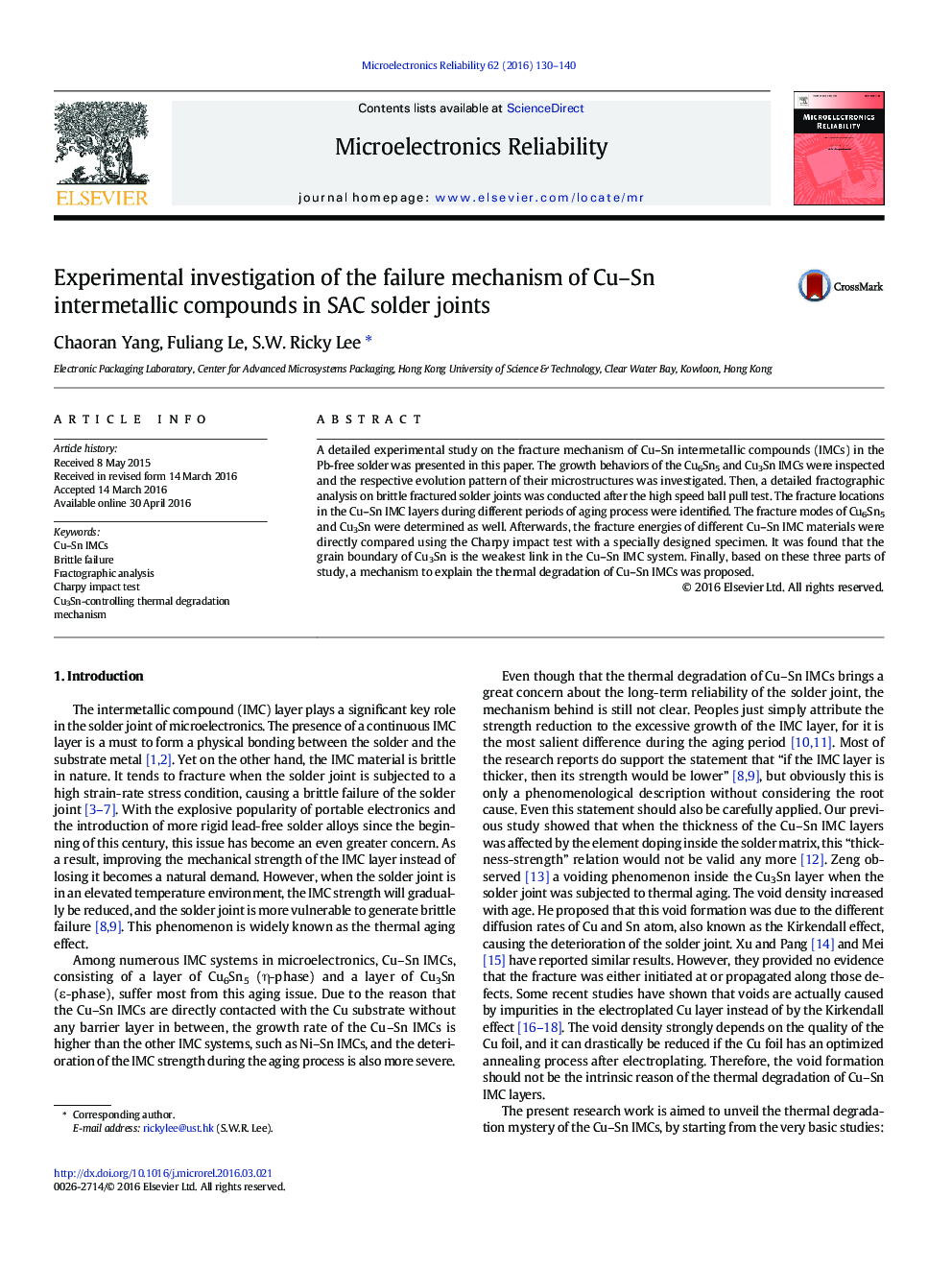| کد مقاله | کد نشریه | سال انتشار | مقاله انگلیسی | نسخه تمام متن |
|---|---|---|---|---|
| 544527 | 1450538 | 2016 | 11 صفحه PDF | دانلود رایگان |

• The transition of fracture location inside the Cu-Sn IMC layers after high speed ball pull test was observed during different aging periods.
• A modified Charpy impact test was conducted to directly compare the fracture energy of Cu-Sn IMC materials.
• A Cu3Sn-controlling thermal degradation mechanism was proposed.
A detailed experimental study on the fracture mechanism of Cu–Sn intermetallic compounds (IMCs) in the Pb-free solder was presented in this paper. The growth behaviors of the Cu6Sn5 and Cu3Sn IMCs were inspected and the respective evolution pattern of their microstructures was investigated. Then, a detailed fractographic analysis on brittle fractured solder joints was conducted after the high speed ball pull test. The fracture locations in the Cu–Sn IMC layers during different periods of aging process were identified. The fracture modes of Cu6Sn5 and Cu3Sn were determined as well. Afterwards, the fracture energies of different Cu–Sn IMC materials were directly compared using the Charpy impact test with a specially designed specimen. It was found that the grain boundary of Cu3Sn is the weakest link in the Cu–Sn IMC system. Finally, based on these three parts of study, a mechanism to explain the thermal degradation of Cu–Sn IMCs was proposed.
Journal: Microelectronics Reliability - Volume 62, July 2016, Pages 130–140